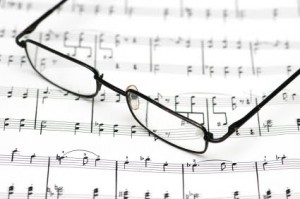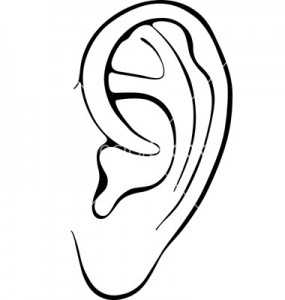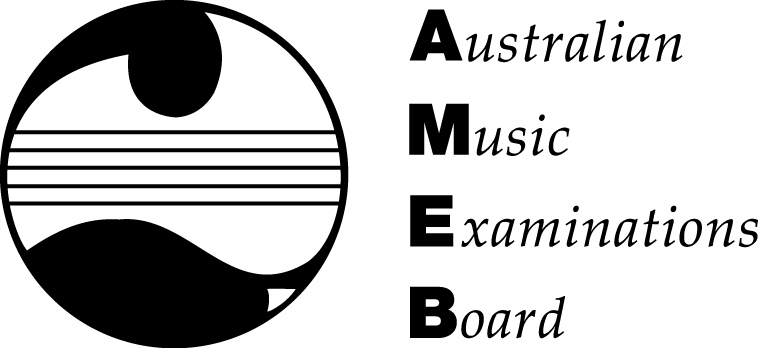7 Things You Need To Know To Get Started
Having been giving classical guitar lessons from my studio in Brunswick for many years now I’ve found there is often confusion as to what exactly is expected from students when they sit AMEB (Australian Music Education Board) practical exams.
Often they don’t realize they need to prepare extra list pieces or perhaps are unaware that there is an aural/listening component to the exam. This post aims to present all in one place exactly what is involved taking an AMEB classical guitar examination. In addition to going through all the different sections in detail I’ll discuss the pros and cons achieving an AMEB certificate as your musical milestone. I’ve taught a lot of students over the years and have found time and time again that my students who have this clear goal (not to mention a very real deadline once the performance date is locked in) to work towards consistently outperforming my students who see me in the “just for fun” capacity. This isn’t to say the exam approach isn’t also fun. I’d say just the opposite in fact – there’s a wonderful and exhilarating sense of achievement involved with walking into the exam room knowing you are well prepared and ready to kick some butt. There are many testimonials from my current students on my webpage to back this up!
About the AMEB
AMEB classical guitar qualifications are nationally and internationally recognized. AMEB has been assessing students since 1887 and is the only examinations board that has formal links with Australian Universities and Ministries of Education. AMEB syllabi are developed by leading Australian musicians and educators using approaches developed specifically for the Australian education system.
AMEB guitar exams explained
AMEB classical guitar exams are divided up into levels, starting at the Preliminary stage, moving up to Grade 1 up to Grade 8. They then move into nationally recognized diplomas, AMusA, LMusA. For most students it should take about one year of study and hard work for each grade up to Grade 5 and then two years of study and hard work for Grades 6 through 8. This can, of course, vary from student to student and depends on great teachers to encourage and guide the student’s progress; something that cannot be understated. More information about the AMEB can be found on their website here and any further questions may be directed to myself or directly to the Victorian branch of the AMEB via their contact page.
AMEB classical guitar exams are divided into six main areas:
Set Pieces
Three pieces in total are chosen and it is recommended the pieces be chosen from the series 2 AMEB classical guitar syllabus released in 2012. Students may choose one piece from lists A, B and C to ensure chosen pieces have the required technical and stylistic contrast. For grades 5 through 8 candidates will also prepare an additional list D piece.
Technical Work
There is no scope for interpretation here and all scales and exercises are to be presented exactly as written in the AMEB Technical Work book. The study of technical work is crucial in the development of both the left and right hands and this section is often the most neglected one with students not sitting exams and playing “just for fun”. The ultimate aim of technical practice is to hone dynamic control, tonal variety and appropriate phrasing. In short – to acquire the control and nuances to play with real musicality.
Sight Reading
 Reading written notation is like reading a written language. Fluency will give you the independence to explore and play any style of music. Sight reading should be part of a students practice routine both in and out of lessons. With regular practice students should be able to read through repertoire two grades lower than the level at which the student is playing. This holds true for the level of proficiency expected at your exams: for example a student sitting the grade 4 practical exam would be expected to comfortably read music at the grade 2 level.
Reading written notation is like reading a written language. Fluency will give you the independence to explore and play any style of music. Sight reading should be part of a students practice routine both in and out of lessons. With regular practice students should be able to read through repertoire two grades lower than the level at which the student is playing. This holds true for the level of proficiency expected at your exams: for example a student sitting the grade 4 practical exam would be expected to comfortably read music at the grade 2 level.
General Knowledge
The general knowledge section encompasses what one learns throughout the course of guitar lessons in relation to harmony, theory and history of music. The examiner may ask for example the nationality of the composer whose music you are playing or perhaps the key of a given piece. It is recommended to concurrently study music theory (AMEB Theory exams are available online) though this does not become compulsory until Grade 5.
Aural Tests
Development of listening skills is an integral part of being a well-rounded musician and impacts on all areas of being a musician. All  candidates take the same group of tests. These are carefully graded from basic recognition of rhythm and memory of short phrases to tests demanding well-developed aural perception and discrimination. For any test that requires a sung response, pitch rather than vocal quality is the object. The examiner will be happy to adapt to the vocal range of the candidate
candidates take the same group of tests. These are carefully graded from basic recognition of rhythm and memory of short phrases to tests demanding well-developed aural perception and discrimination. For any test that requires a sung response, pitch rather than vocal quality is the object. The examiner will be happy to adapt to the vocal range of the candidate
Extra Pieces (Grade 2 onwards)
From grade 2 onwards candidates must prepare 5 pieces instead of 3. Candidates will play their 3 set pieces as usual and then the examiner will ask for one additional piece of the 2 prepared (always be prepared to play both – it happens). These pieces must of course be of the same technical level as the grade being studied – though the student and teacher may choose and cater towards the preference of the student. For example, choosing additional music in the blues or flamenco style if this is something with which the student feels the most affinity for.
What are the pros and cons of an AMEB guitar exam?
Exams lead towards a day where the student must front up with a well-prepared, well-balanced performance to an external examiner. The grades can be seen as achievement for children and adults alike and setting these goals can provide a positive sense of progression. Upon completion of their AMEB practical exams candidates are presented with a nationally recognised certificate.
An exam is a big commitment of practice with great results of progress if fully embraced I have found that it is nearly impossible to “cram” for a practical music exam, and good results only come with steady practice throughout the year.
When are the AMEB classical guitar exams and how do I enroll?
There are 5 “Metropolitan Practical” exam intakes each year. Enrolment forms can be downloaded from the AMEB website and submitted personally by the student or parent or alternately Media Luna Guitar Tuition can take care of all enrolment details. The enrolment dates for 2015 are as follows – late submissions are possible but incur an additional fee of $35 from the AMEB.
1st Metropolitan 20 April – 9 May (Closing date 25 February)
2nd Metropolitan 18 May – 5 June (Closing date 18 March)
3rd Metropolitan 9 June – 27 June (Closing date 22 April)
4th Metropolitan 10 August – 5 September (Closing date 27 May)
5th Metropolitan 5 October – 15 November (Closing date 22 July)
For all enrollment fees, subject codes and other enrollment information please check the AMEB website or be in touch with me directly.
Why do classical guitar lessons with Media Luna Guitar Tuition?
Since the conception of Media Luna Guitar Tuition, I have guided many students on the path to AMEB exams. The success rate continues to be outstanding, giving students a new set of skills, sense of achievement and confidence. More details on my experience and qualifications as a music teacher can be found on the ‘about’ page of my website About Media Luna. My music school is located in Brunswick West and online guitar lessons are also available via skype. For a limited time I’ll be offering free 20 minute assessments online: get in touch for a chat to see if Media Luna Guitar Tuition can meet your needs.
Below is a short piece played by one of my most promising young students. Piripi has been with Media Luna Guitar Tuition a little under 3 years, has received High Distinctions in his 3 exams completed so far and while away on holiday last year, along with his brother Tama, won a $25 Gelato voucher in a local talent show. He enjoys playing blues and rock style pieces most of all. Both styles are catered for with the most recent series of publications by the AMEB. After being understandably envious of his great playing, Piripi’s brother and neighbour are now both taking classical guitar lessons with Media Luna Guitar Tuition.
Other examples of AMEB repertoire may be heard on my youtube channel. The pieces being performed both by myself and by some of my talented students. There are also resources provided here including videos and performance notes.
Further Questions.
I’d be happy to answer any further questions – just get in touch through my contact form. For my next blog I’ll be covering some of the finer points of doing AMEB classical guitar. For example – What to wear? How long is the exam? Where are the exams held? Do I have to play from memory? How to deal with exam nerves?
All feedback is welcome. I’d especially love to hear from other Melbourne guitar teachers. Thanks for reading and see you next time.

